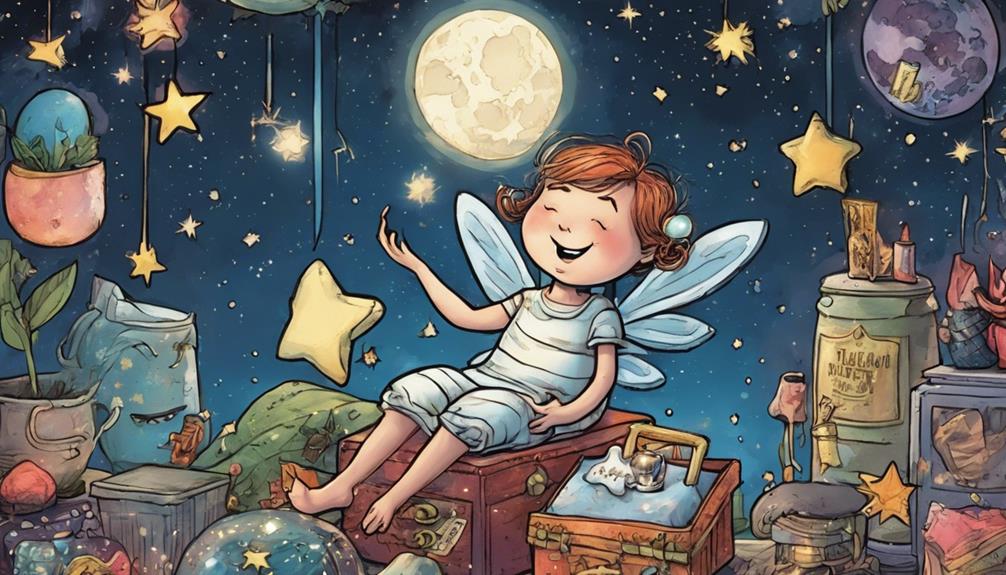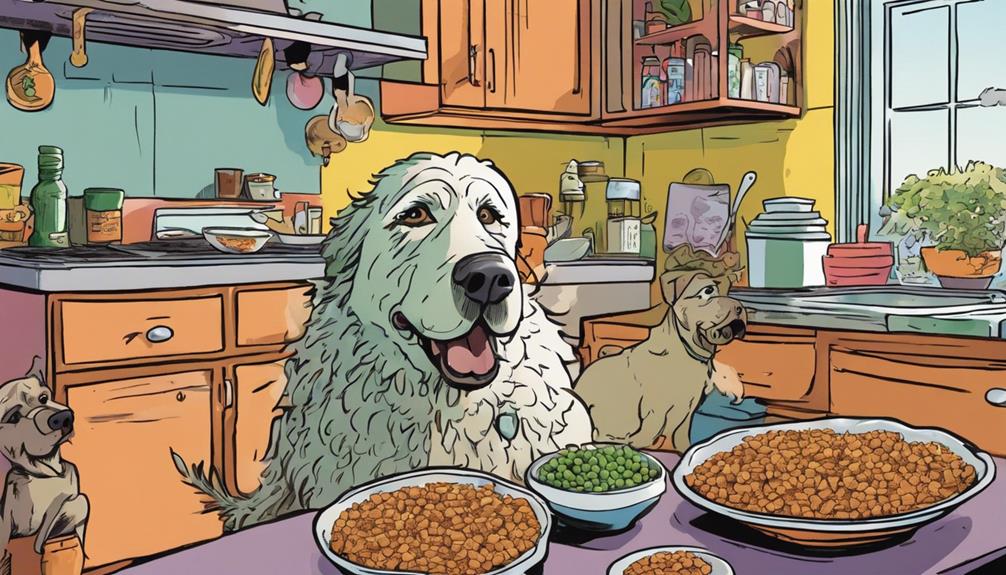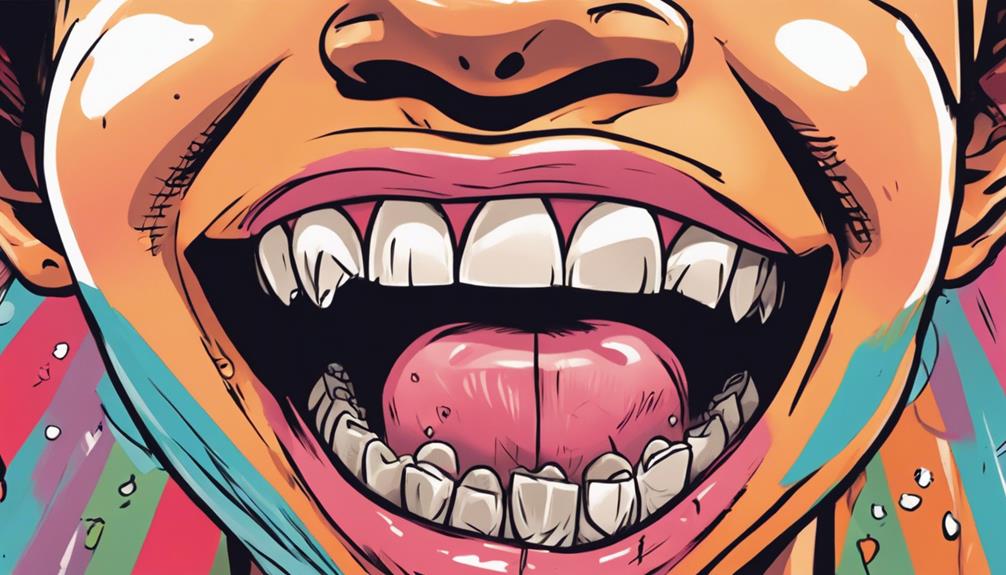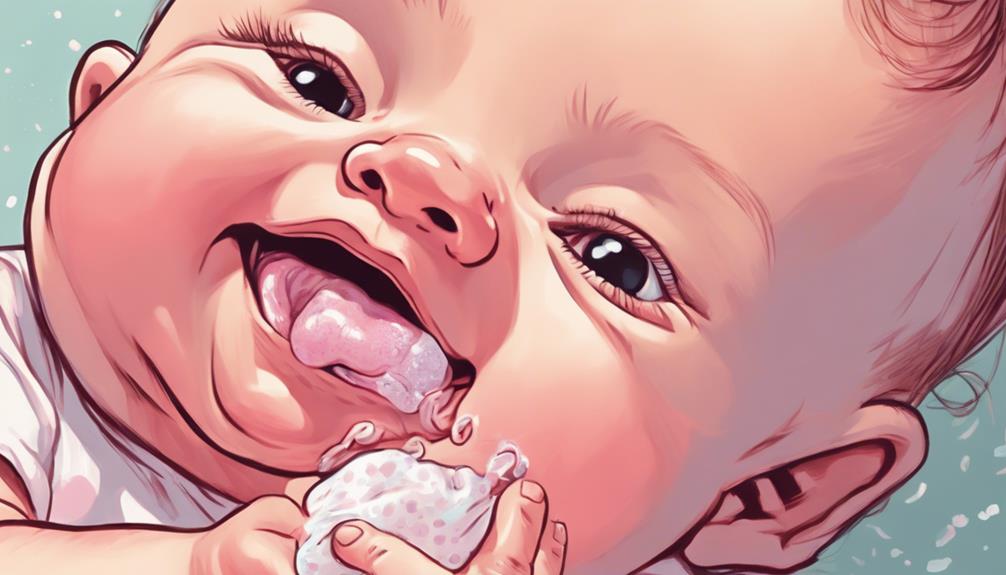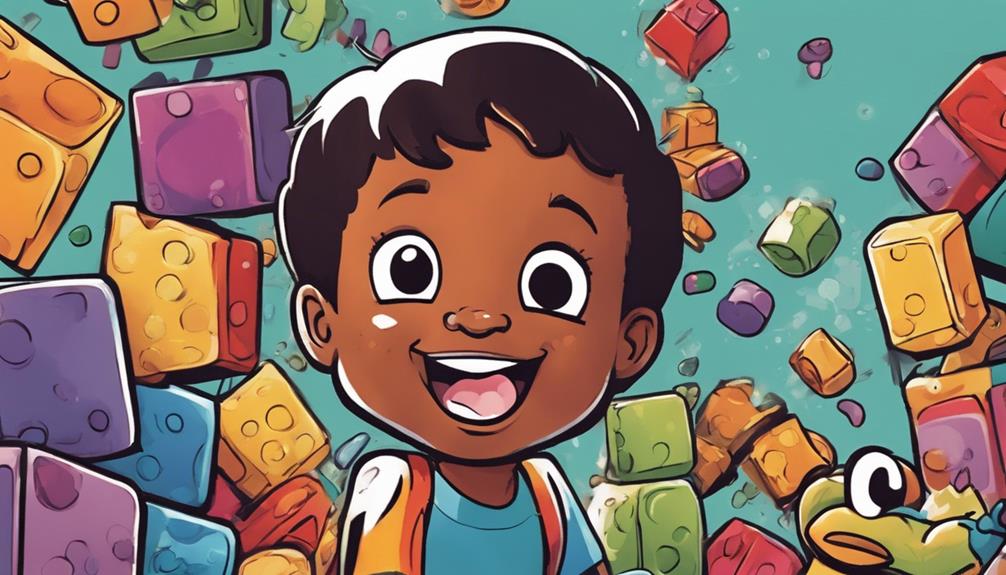When your child's baby teeth fall out, there are plenty of ways to celebrate this milestone. You can embrace tradition by encouraging the Tooth Fairy to visit, leaving a small gift or note in exchange for the tooth. Consider creative options like turning the tooth into a keepsake pendant or storing it in a decorative box to cherish later. Some families choose to bury the tooth, signifying growth and change. If you're curious about the potential of baby teeth beyond sentimentality, there are also intriguing options for preservation and even donation. Stick around to uncover more possibilities!
Key Takeaways
- Celebrate tooth loss with tooth fairy traditions, creating joyful memories through small gifts or special rituals.
- Burying baby teeth symbolizes growth and transition, honoring cultural practices and milestones in a child's development.
- Preserve baby teeth in keepsake boxes or through creative projects like scrapbooks and jewelry to celebrate this childhood phase.
- Schedule regular dental check-ups to monitor oral health and ensure proper development of permanent teeth.
Tooth Fairy Traditions

When kids lose their first tooth, many parents embrace tooth fairy traditions to make the experience special and memorable. This little ritual transforms the loss of a tooth into a joyful celebration, helping children feel excited rather than anxious. You might find yourself crafting a unique narrative around the tooth fairy, who leaves a small gift in exchange for the tooth. Common gifts include books or favorite candies, adding an element of surprise and delight.
Family traditions surrounding this event can vary widely. Some families create elaborate celebrations, while others keep it simple. Whether you choose to leave the tooth under the pillow or set up a special tooth fairy box, these practices foster a sense of belonging and joy. The tooth fairy helps ease fears about growing up, turning what could be a scary experience into a cherished memory.
The idea of the tooth fairy resonates across cultures, with variations like the Spanish tale of Little Ratón Pérez. These stories not only entertain but also impart valuable lessons, enriching your family traditions and creating lasting memories around the milestone of losing that first lost tooth.
Burying Baby Teeth
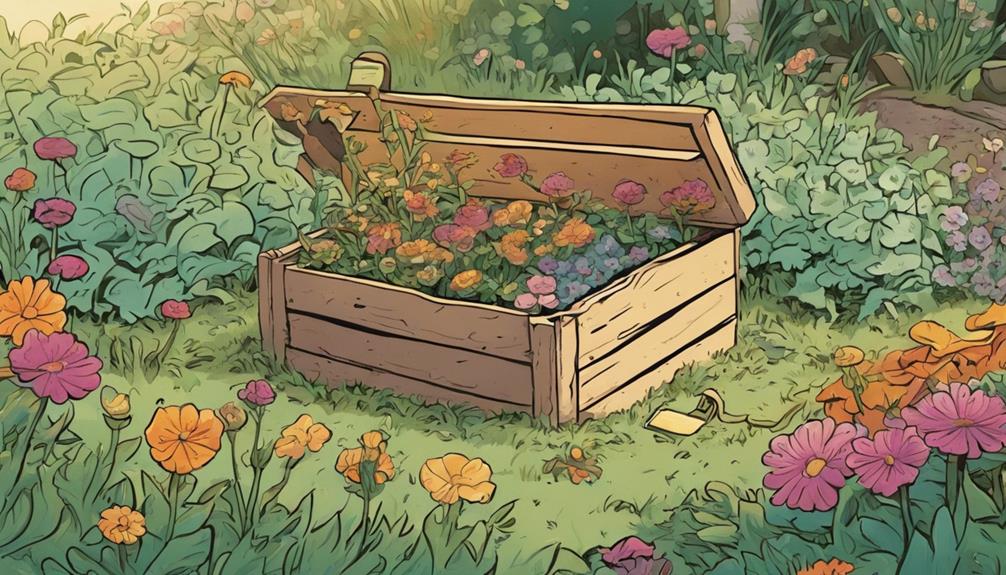
Burying baby teeth is more than just a disposal method; it holds deep cultural significance in many traditions around the world.
You might find that various rituals and customs not only symbolize a child's growth but also strengthen family bonds through shared experiences.
Let's explore how these practices differ across cultures and what they can mean for your family.
Cultural Significance of Burying
Many cultures regularly practice burying baby teeth as a meaningful ritual that symbolizes the change from childhood to adulthood. This act often reflects a child's growth and development, marking a significant milestone in their life. For instance, in some American Indian tribes, you might bury the teeth alongside branches and herbs to honor your child's connection to nature and their health.
In Turkey, parents bury the first baby tooth in a special spot to cultivate positive traits in their child. This custom emphasizes the cultural significance of nurturing both personal and communal identity.
Meanwhile, various Asian cultures have distinct practices, such as tossing teeth onto roofs or burying them, with the belief that these actions promote the healthy growth of permanent teeth.
Engaging in these rituals can strengthen family bonds, as they often involve shared experiences and stories. Burying baby teeth transcends mere disposal; it's a powerful symbol of letting go of childhood and embracing the journey toward adulthood.
Understanding these customs can deepen your appreciation for the cultural significance behind such practices, enriching your family's traditions.
Rituals and Customs Explained
Celebrating the change from childhood, rituals surrounding the burial of baby teeth carry deep cultural meanings and foster family connections. These customs vary across cultures, each with its unique significance. When you bury a baby tooth, you're not just letting go of a physical piece of your child's early life; you're also participating in a time-honored tradition that promotes growth and change.
Consider these emotional aspects of burying baby teeth:
- Symbolism: It represents the change from childhood to maturity.
- Connection: Strengthens family bonds through shared rituals.
- Nature: Honors the child's growth and their connection to the earth.
In American Indian tribes, you might bury teeth with branches and herbs, while Turkish customs encourage placing the first tooth in a meaningful location to nurture specific traits. Various Asian traditions involve throwing teeth on roofs or burying them to promote the healthy growth of permanent teeth.
Through these rituals, you cultivate a deeper understanding of your family's heritage and your child's journey.
Stem Cell Research

Because baby teeth contain valuable stem cells, they offer exciting possibilities for future medical advancements in regenerative medicine. These unique stem cells have shown potential in repairing tooth damage and aiding in neural injury recovery. The National Institute of Dental and Craniofacial Research has conducted studies suggesting that stem cells harvested from baby teeth may even play a role in bone regeneration.
Storing these precious stem cells is straightforward. By using a reliable stem cell bank, you can guarantee their preservation for future medical use. This process makes it easier for scientists to explore the potential of dental stem cells as a less invasive alternative for regenerative treatments.
As interest in the medical applications of dental stem cells grows, many parents are choosing to save their children's baby teeth for potential future harvesting. By doing so, you're not just holding onto a sentimental item; you're also contributing to the advancement of science. Who knows? Your child's baby tooth could one day help someone recover from an injury or illness, making it a meaningful keepsake with the power to impact lives.
Creative Keepsakes

Transforming baby teeth into creative keepsakes allows you to cherish your child's milestones in a unique and meaningful way. One of the simplest methods is to use keepsake boxes, which provide a safe and organized space to store those precious teeth. You can personalize these boxes to reflect your child's personality, turning each one into a treasured memory.
Consider engaging in some creative crafts with your child. You might decorate frames or create scrapbooks that celebrate their tooth loss journey. These activities not only preserve memories but also bond you through the experience.
You can also explore the option of sentimental jewelry. Turn a baby tooth into a pendant or charm, allowing you to keep a tangible piece of your child's growth close to your heart. Additionally, decorative displays like shadow boxes can showcase lost teeth alongside photos and notes, creating a visual story of your child's development.
- A handmade scrapbook filled with laughter and love
- A personalized keepsake box that tells your child's story
- A cherished pendant, a reminder of fleeting childhood
Seeking Dental Care

Regular check-ups are essential for your child's oral health, so don't wait too long to schedule that first dental visit.
You'll want to keep an eye on any loose teeth and know when to seek professional help, especially if there's been an injury.
Plus, understanding emergency dental services can give you peace of mind knowing that immediate assistance is available when needed.
Importance of Regular Check-ups
Scheduling regular dental check-ups is crucial for your child's oral health, as nearly 50% of kids aged 2-9 have faced tooth decay. These visits aren't just about fixing problems; they help prevent them from happening in the first place. By starting dental visits by age one or after the first tooth erupts, you can establish a positive relationship with dental care early on.
Here are a few reasons why regular check-ups are important:
- Catch issues early: Dentists can identify potential problems with your children's teeth before they become serious.
- Promote healthy habits: Regular visits encourage good oral hygiene practices from a young age.
- Guarantee proper development: Monitoring baby teeth loss helps guarantee that permanent teeth come in correctly.
Investing in pediatric dental care now means protecting your child's smile for years to come. Regular check-ups provide invaluable insights that help keep your child's teeth healthy and strong. Don't wait—make that appointment today!
Pediatric Dental Care Tips
Seeking proper pediatric dental care is essential for ensuring your child's teeth develop healthily and strong. It's recommended that you schedule their first dental visit by age one or after the first baby teeth erupt. Regular check-ups can help prevent issues, especially since nearly 50% of children aged 2-9 experience tooth decay.
During these visits, your dentist can provide professional advice on best practices for caring for baby teeth. They'll also monitor for loose or decayed teeth, ensuring a smooth shift to permanent teeth.
It's vital to encourage your child to brush at least twice a day and to establish a daily flossing routine early on. These habits promote good oral hygiene and set the stage for a lifetime of healthy teeth.
If you're in Houston, TX, local dental services offer specialized pediatric care. Don't hesitate to seek timely and appropriate dental attention for your child.
Emergency Dental Assistance Availability
When dental emergencies arise, knowing where to find immediate assistance can make all the difference in protecting your child's oral health.
Having access to emergency dental services is vital for handling injuries or severe issues promptly. In Houston, TX, you can find local dental services that cater specifically to children's needs, ensuring your little one receives the best care possible.
Here are some essential tips to remember:
- Act quickly: Time is of the essence when it comes to dental emergencies.
- Stay calm: Panicking can make the situation worse for both you and your child.
- Gather health information: Have your child's dental history ready for the dentist.
Preservation and Storage

How can you best preserve and store your child's baby teeth to keep those precious memories intact?
Start by cleaning the teeth thoroughly. Rinse them with water and a bit of soap, and disinfect the surfaces using rubbing alcohol. This guarantees hygiene before storage. Once clean, dry the teeth using a clean towel or let them air dry to prevent any deterioration.
For organized preservation, consider using a keepsake box. These boxes are perfect for storing baby teeth, allowing you to keep them safe and accessible. Alternatively, baby books often come with attached envelopes specifically designed for teeth, serving as a wonderful memory keepsake.
Many parents also get creative by transforming baby teeth into jewelry or crafts. This adds sentimental value and provides a unique way to cherish these milestones.
Remember, a significant number of adults express a desire to save their children's teeth, often driven by family traditions and nostalgia.
Whatever method you choose, the key is to guarantee proper storage and preservation to maintain those special memories for years to come.
Donation Process
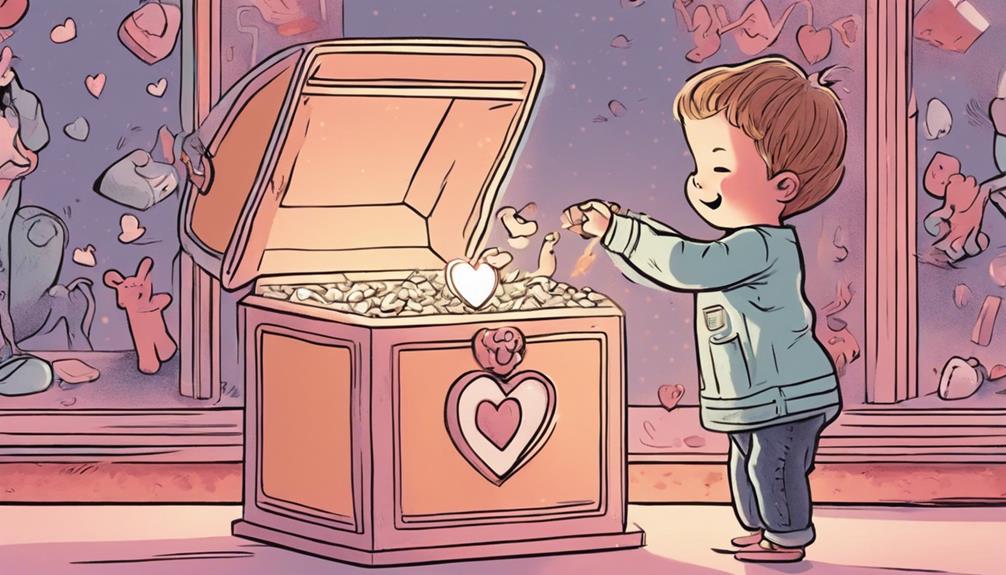
Donating your child's baby teeth not only preserves memories but also contributes to important dental research. This process helps scientists gather valuable data that can lead to advancements in dental health and childhood development.
Here's how to make the donation:
- Wrap the first tooth in cotton or tissue.
- Place it in a Ziplock bag for safe transport.
Involving your child in the donation process can create a fun and educational experience. While their participation isn't mandatory, it can help them understand the significance of their teeth in the context of health studies.
Community Engagement

Engaging your community in the conversation about baby teeth can promote awareness of their sentimental and scientific significance. By organizing local events, you can create a platform for parents to share experiences and traditions surrounding baby teeth. This fosters connections and cultural exchange, enhancing community bonds.
You might also consider hosting informational workshops at schools and community centers. These sessions can focus on the health benefits of dental care and the importance of preserving baby teeth for potential stem cell research. Collaborating with local dental professionals can further enhance awareness and promote proper dental care practices.
Here's a table that breaks down some key aspects of community engagement regarding baby teeth:
| Activity | Purpose | Community Benefit |
|---|---|---|
| Local Events | Raise awareness about sentimental value | Strengthen community ties |
| Support Groups | Share experiences and traditions | Foster cultural exchange |
| Informational Workshops | Educate on dental care and preservation | Promote children's health |
| Campaigns with Health Services | Address psychological impacts of dental milestones | Build support networks |
Myths and Misconceptions

Many parents frequently underestimate the importance of baby teeth, believing they're insignificant when, in fact, they play a vital role in a child's oral health. The myths surrounding baby teeth can lead to poor dental care and unnecessary complications.
Here are some common misconceptions you should be aware of:
- Baby teeth guide the proper alignment of permanent teeth.
- Cavities in baby teeth can lead to pain and infections if ignored.
- You shouldn't rush to pull out loose teeth; they should fall out naturally.
It's important to understand that baby teeth aren't just placeholders; they help in speech development and proper nutrition.
When children are losing their baby teeth, it's a natural process that should be monitored, not rushed.
Make sure your child maintains good oral hygiene, and consult a dentist for any concerns regarding their baby teeth.
Frequently Asked Questions
Do You Throw Away Baby Teeth?
You can throw away baby teeth if you want, but many parents regret that decision later. Consider preserving them instead; they hold sentimental value and can serve as a cherished keepsake of childhood memories.
What Do You Do With Kids Teeth After They Fall Out?
Imagine each lost tooth as a tiny time capsule, holding memories. You can cherish these keepsakes in creative ways—turn them into jewelry, store them in a special box, or even donate them for research!
What Do Parents Do With Baby Teeth?
When it comes to baby teeth, you might save them in keepsake boxes, turn them into jewelry, or even bury them as a family ritual. Many parents cherish these tiny treasures as sentimental reminders of childhood.
What to Do When You Lose Baby Teeth?
When you lose baby teeth, encourage gentle wiggling to let them fall out naturally. Rinse your mouth afterward, and if an injury caused it, visit the dentist to guarantee everything's alright and prevent infections. If your child’s permanent teeth start to come in before the baby teeth have fallen out, it’s important to consult with a dentist to ensure proper alignment. Regular dental check-ups are essential for monitoring the development of your child’s teeth and ensuring they maintain good oral health. Remember, there are affordable dental care options for kids, so don’t hesitate to seek out professional care for your child’s dental needs. Babies losing teeth is a natural part of their development, and it’s important to support them through this process. Encourage them to practice good oral hygiene, including regular brushing and flossing, to maintain the health of their new teeth. Additionally, keeping an eye on their diet and limiting sugary snacks can help prevent tooth decay as their new teeth grow in. By staying proactive and seeking professional dental care when needed, you can ensure that your child’s dental health remains a priority as they continue to grow and develop.
Can Baby Teeth Falling Out Affect Cavities in Kids?
Yes, baby teeth falling out can affect cavities in kids. It’s important to maintain good oral hygiene during this transition. Utilizing natural methods like proper brushing and diet can play a key role in preventing and reversing cavities naturally in kids.
Can Reversing Cavities in Kids Affect What to Do With Baby Teeth That Fall Out?
If you’re able to reverse cavities naturally in kids, it may impact what you do with baby teeth that fall out. Ensuring your child’s teeth are healthy can lead to fewer issues when baby teeth naturally come out. Prioritizing dental health from a young age can set the stage for a lifetime of good oral care.
Conclusion
In wrapping up, whether you choose to celebrate the Tooth Fairy's tradition or craft creative keepsakes, remember to prioritize preservation and proper dental care.
Each baby tooth tells a tale of growth and change, so don't dismiss their significance.
Engage with your community and explore options like stem cell research or donations.
Ultimately, make meaningful memories with these tiny treasures, turning their transformation from little to lost into a cherished chapter in your child's journey.
